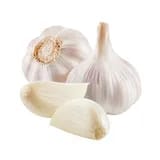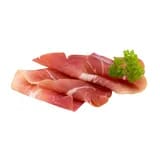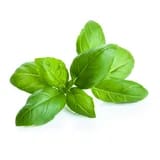Ingredients
Utensils
Stovetop, Pot (small), Colander, Frying pan, Grater
recipe

Step 1
Cook the pasta in salted boiling water according to the instructions on the package, about 8 minutes.


Step 2
Meanwhile, heat a pan on high heat with a drizzle of olive oil and add the tomatoes. Cook for 2 minutes and add the garlic (grated or minced). Cover and continue cooking for 2 more minutes.
Step 3
Before the pasta finishes cooking, reserve 1 cup of cooking water. Drain the pasta.
Step 4
Add the pasta to the pan with the tomatoes and add a few spoonfuls of the pasta cooking water. Add salt & pepper and mix. Cook for 1 minute and remove from heat.



Step 5
Serve the pasta in a large bowl with the prosciutto, burrata, and some fresh basil leaves (optional). Season with salt & pepper and enjoy!
Personal notes
Add your own flavor!
Nutrition facts
Average estimated amount for one serving
| Energy | 569 cal. |
| Fat | 19 g |
| Carbohydrates | 70 g |
| Protein | 28 g |
| Fiber | 4 g |
Values are based on an average estimate for one serving. All nutrition information presented on Jow is intended for informational purposes only. If you have any concerns or questions about your health, please consult with a health-care professional.
On average, one serving of the recipe "Burrata Pasta" contains 569 Energy, 19 g of Fat, 70 g of Carbohydrates, 28 g of Protein, 4 g of Fiber.
Price per portion
| € | Nos recettes à -2 € par portion |
| €€ | Nos recettes entre 2 € et 4 € par portion |
| €€€ | Nos recettes à +4 € par portion |
Please note, the price above is dependent on your grocer and the available products in the grocery store you chose.
Scores


C Nutri-score
The Nutri-score is an indicator intended for understanding nutritional information. Recipes or products are classified from A to E according to their food composition to promote (fiber, proteins, fruits, vegetables, legumes, etc.) and foods to limit (energy, saturated fatty acids, sugars, salt, etc.).
B Green-score
The Green-score is an indicator representing the environmental impact of food products. The recipes or products are classified from A+ to F. It takes into account several factors on the pollution of air, water, oceans, soil, as well as the impacts on the biosphere. These impacts are studied throughout the product life cycle.
Retrieving reviews...



